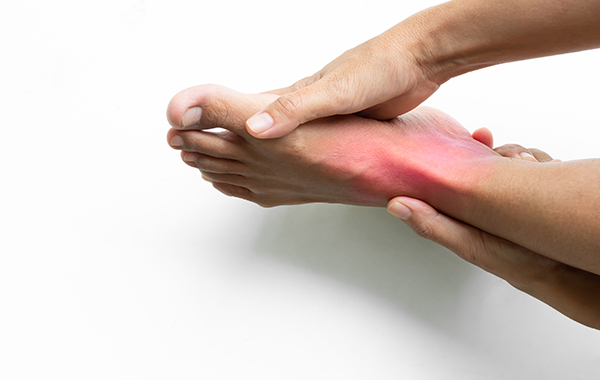Ingrown Toenails in Children
Ingrown toenails can happen in children of any age and are most likely to develop on the big toe. In some situations, other toenails and fingernails may be affected as well, although cases of ingrown fingernails are rare.
UNDERSTANDING INGROWN TOENAIL CHILDREN
Overview
Infection can occur in the wound due to skin breakages caused by sharp nail edges. If unaddressed, ingrown toenails are likely to recur and an infection may create severe complications if it spreads to the surrounding soft tissues, blood stream, or bones.

Ingrown Toenails May Be Caused By:
Improperly trimmed nails leaving a spike at the corner
Crowding of toes due to tight footwear
Growth and development of the child
Trauma to the feet
Poor nail picking habits
Once an ingrown nail penetrates the skin, the wound will not heal properly unless the spike is removed and the infection is eradicated.
Ingrown Toenails in Babies and Toddlers
Babies as young as 3 months old can develop ingrown nails due to the rapid growth of the nails and surrounding flesh. Nail growth must be monitored from birth as the child is most often unable to verbalise the pain. Symptoms of ingrown toenails can include:
Tender and painful toe(s) mainly when rubbed or squeezed even lightly by a tight shoe or sock
Limping or frowning while walking or crawling
Slight pressure around the area of the toenail causes your child to cry out or become uncomfortable
Changes in skin colour around the toenail
Naturally wider nail plates can also lead to ingrown toenails and must be managed well to avoid complications.
Ingrown Toenails in Children and Teenagers
Ingrown toenails are a common condition that can occur in older children – teenagers in particular. Symptoms may include:
Pain and tenderness when pressure is applied on the toe or the surrounding area
The presence of pus or yellow fluid
A noticeable limp
Changes in skin colour around the toenail
Growth spurts can cause the nail to grow larger than the surrounding flesh or vice versa, and children with wider nail plates face a higher risk of getting ingrown toenails. These must be managed well to avoid any complications.
How Can a Podiatrist Helps?
Podiatrists are foot experts that specialise in performing small delicate procedures with razor-sharp precision, incurring only minimal damage to the areas around the ingrown nail.
A minor in-clinic procedure will be conducted to remove the offending spike and the nail will be trimmed to a length that will promote proper pain-free growth. Following this, your podiatrist will apply a suitable dressing to help encourage wound healing and reduce any localised infection.
Podiatric care for ingrown toenails has several advantages:
No stitches
Low rate of recurrence
Swift recovery
Aesthetically pleasing results
Individuals with eyesight problems, mobility issues, diabetes, peripheral vascular disease, or other circulatory disorders should avoid any form of self-remedy and seek immediate medical attention. Ingrown nails can have severe complications and heightened risks for these individuals
A total nail removal surgery may be unavoidable in cases of severe, recurrent, non-resolving, or incurvated toenails where the nail naturally fans outward or involutes (curls down at the sides). Please consult with your podiatrist to find out if you are suitable for this procedure as restrictions may apply depending on your health status.
How to Prevent?
Ingrown toenails can be prevented by:
Teaching your child how to trim their toenails properly. This involves cutting the toenails in a fairly straight line, and ensuring they are not cut too short.
Taking care to be conscious of your surroundings. Ensure the home is clear of tripping hazards and potential falling objects that could cause harm to the feet.
Wearing proper-fitting shoes. Supportive footwear helps to keep your toes in a comfortable position and allows the nails to grow in a natural, unhindered way.
Aesthetically pleasing results
Contact us if you have any questions or if you would like to make an appointment with a podiatrist to assess your child’s ingrown toenail. Your podiatrist will recommend suitable intervention and suggest prevention methods to reduce the occurrence of future ingrown toenails.
What are the Common Causes?
Irritation
Swelling
Redness
Pain
Overall View of Footwear care
Naturally wider nail plates can also lead to ingrown toenails and must be managed well to avoid complications.
Once a toddler is walking and running around, they usually start spending more time in shoes rather than being barefoot. Your child’s shoes should not be too tight or small as this can place pressure on the toenails, causing them to push into the surrounding skin. This is especially important as your toddler is growing fast and can outgrow shoes in a matter of months.
A child’s shoes should always be checked to ensure that they:
Are both the correct width and length
Have a gap at the front of the shoe and should allow for the child to wiggle their toes
Overall View of Biomechanical issues
As your child starts to walk and run around more you may start to notice the position of their feet and overall posture; perhaps their feet have a different shape to other kids of their age?
Any abnormal foot positioning can increase pressure on the toes and affect the formation of the nail plate. It is important to check your child’s foot posture regularly and visit your podiatrist if you notice any changes.
Book your initial podiatry visit
hello@nofrillspodiatry.com
Phone
9007 1085
Open Hours
Mondays - Sundays: 9am-6pm
We're Here Whenever You Need Us
hello@nofrillspodiatry.com
Contact Us
9007 1085
Open Hours
Monday-Sundays: 10am to 7pm
Address
About
About Us
Symptoms We Help With
FAQs
Careers
Contact Us